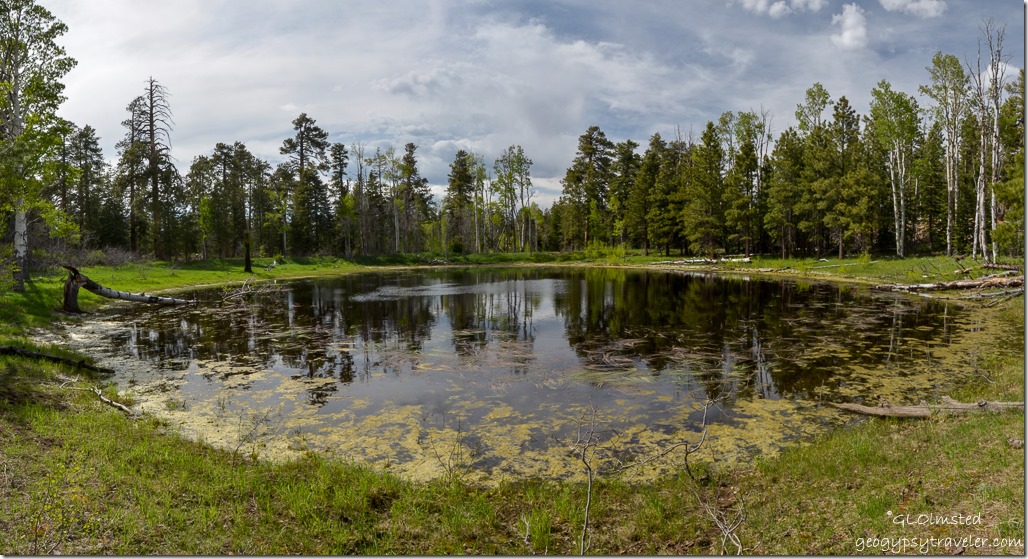 We call it Greenland Lake although it may look like a pond, or puddle, to you.
We call it Greenland Lake although it may look like a pond, or puddle, to you.
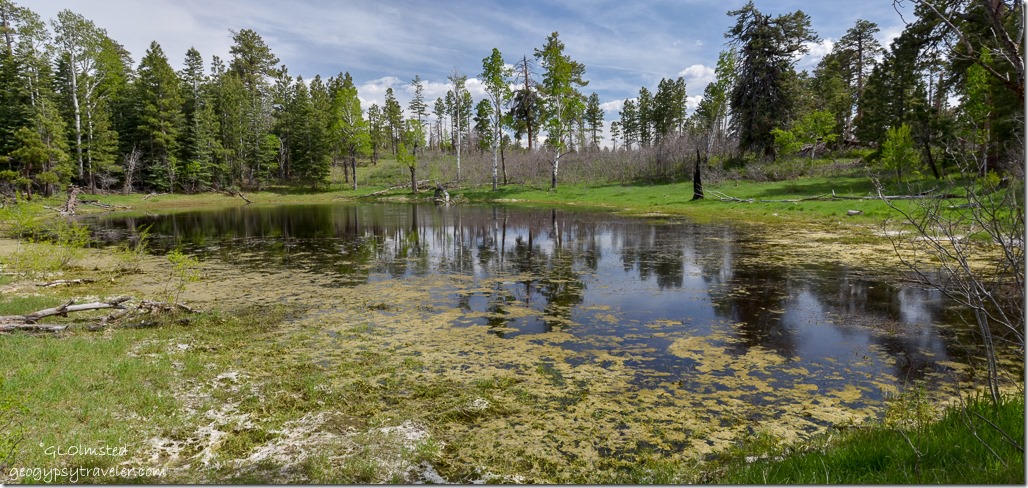 Standing water is rather rare on the Kaibab Plateau. Surface water from snow melt and rain is mildly acidic and seeps through cracks and joints in the Kaibab limestone dissolving the rock and creating a cave under the surface. Then the surface area, lacking support, collapses and creates a sinkhole. Silt and clay flow into the lake sealing the sinkhole’s bottom and enable it to hold water. Yet there is often not enough precipitation to fill the lake.
Standing water is rather rare on the Kaibab Plateau. Surface water from snow melt and rain is mildly acidic and seeps through cracks and joints in the Kaibab limestone dissolving the rock and creating a cave under the surface. Then the surface area, lacking support, collapses and creates a sinkhole. Silt and clay flow into the lake sealing the sinkhole’s bottom and enable it to hold water. Yet there is often not enough precipitation to fill the lake.
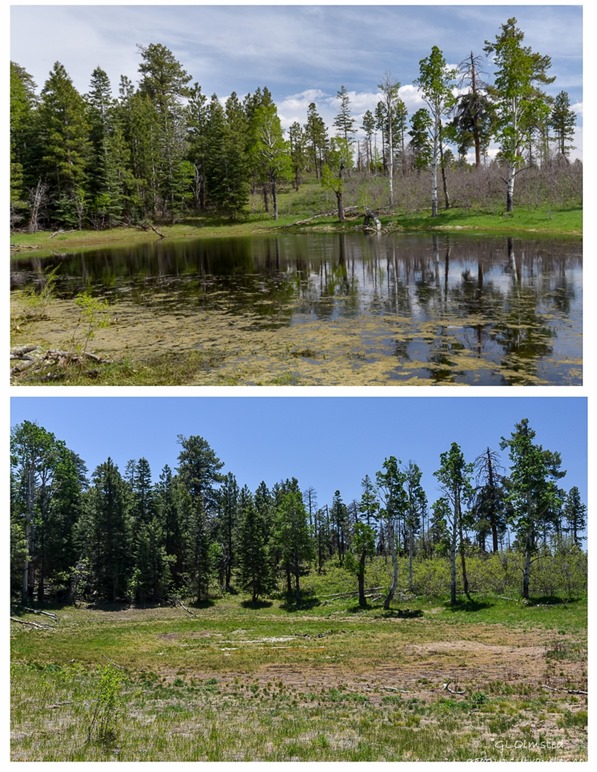 The last time I stopped at Greenland Lake early in June 2014 there was no water so imagine my surprise when the lake looked full on May 30th. That’s a good sign we had a decent snow-pak this winter. My supervisor, who stays through the winter, said 11 feet on the ground at one time.
The last time I stopped at Greenland Lake early in June 2014 there was no water so imagine my surprise when the lake looked full on May 30th. That’s a good sign we had a decent snow-pak this winter. My supervisor, who stays through the winter, said 11 feet on the ground at one time.
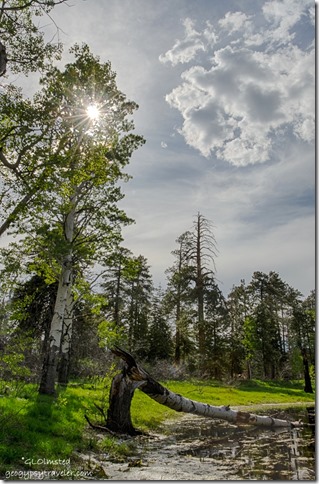 I like to see the changes that occur around the lake. Trees once standing have fallen down and new sprouts of aspen replace them. One dead snag fell into the lake.
I like to see the changes that occur around the lake. Trees once standing have fallen down and new sprouts of aspen replace them. One dead snag fell into the lake.
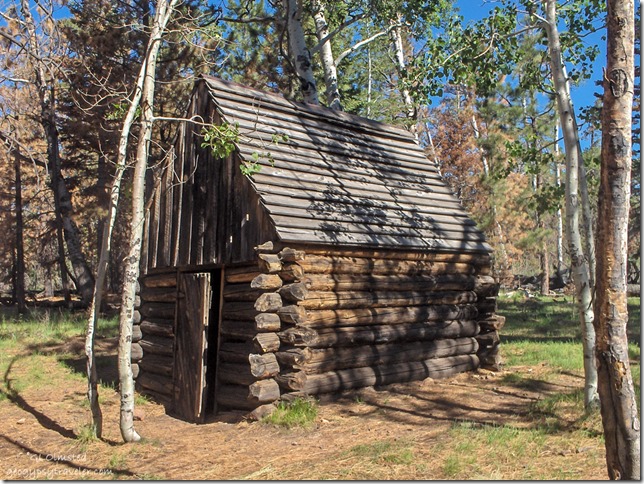 At one time cattle grazed here and a cabin to store salt is near the lake that would have provided intermittent water to the livestock. It’s only a 200 yard walk, past the lake to the cabin but instead I walked around the shoreline watching out for gopher mounds that can be a real ankle biter.
At one time cattle grazed here and a cabin to store salt is near the lake that would have provided intermittent water to the livestock. It’s only a 200 yard walk, past the lake to the cabin but instead I walked around the shoreline watching out for gopher mounds that can be a real ankle biter.
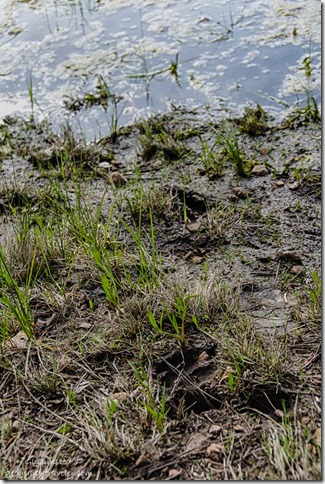 Now, this waterhole provides for wildlife like deer, cougar, and bobcat. Swifts flew in and out searching for insects but way too fast for me to photograph.
Now, this waterhole provides for wildlife like deer, cougar, and bobcat. Swifts flew in and out searching for insects but way too fast for me to photograph.
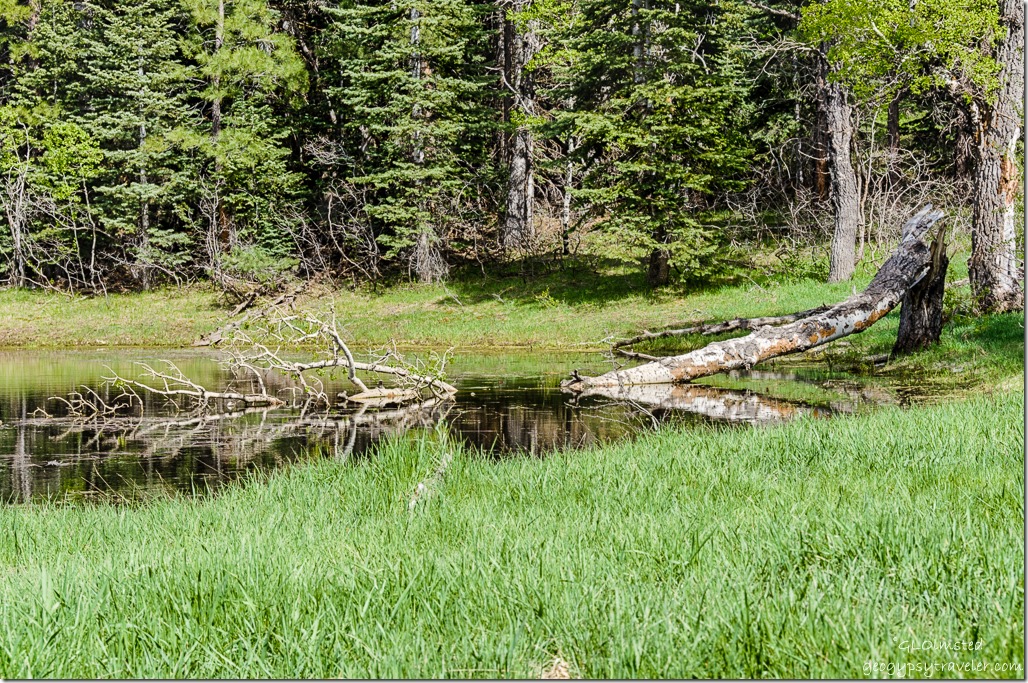 I marveled at the reflections from different angles around the lake.
I marveled at the reflections from different angles around the lake.
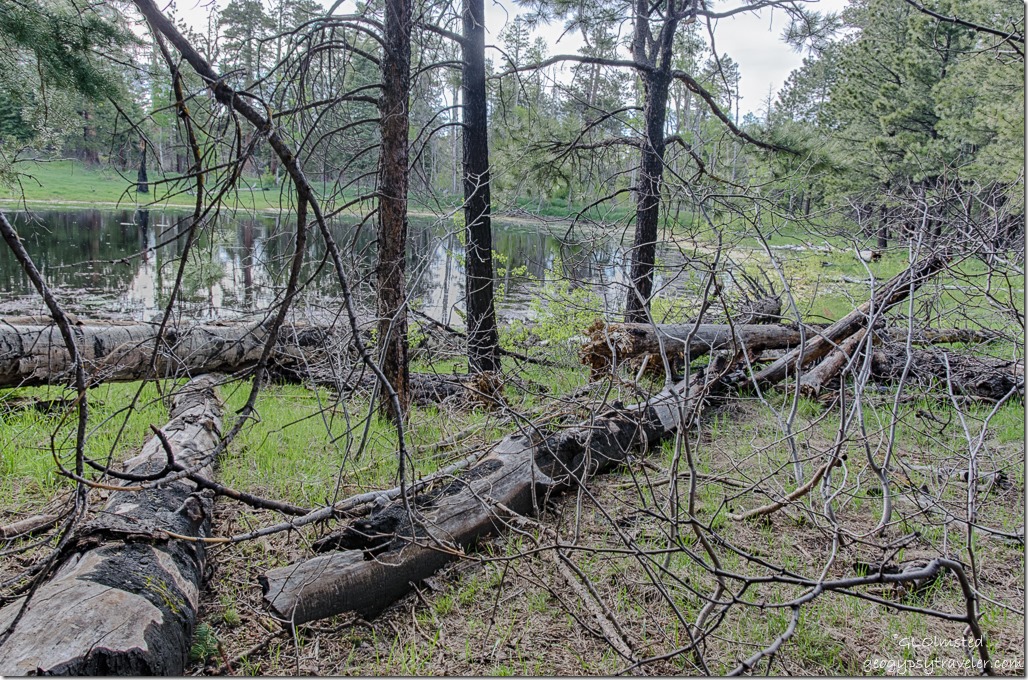 And had to do a little scrambling to get around the far side of the lake. Shoreline was soft and some areas were thick in New Mexico Locust which is full of thorns.
And had to do a little scrambling to get around the far side of the lake. Shoreline was soft and some areas were thick in New Mexico Locust which is full of thorns.
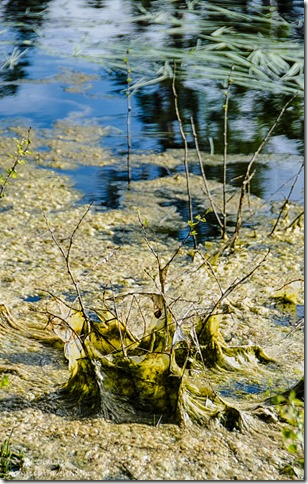 Not sure what the mucky looking stuff is but made for an interesting pattern. Maybe that’s where the salamanders hide out.
Not sure what the mucky looking stuff is but made for an interesting pattern. Maybe that’s where the salamanders hide out.
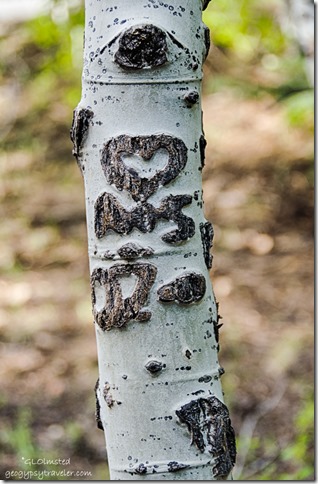 I recommend the stop along the Cape Royal Road to explore Greenland Lake and the Salt Cabin. But please don’t carve into the trees.
I recommend the stop along the Cape Royal Road to explore Greenland Lake and the Salt Cabin. But please don’t carve into the trees.

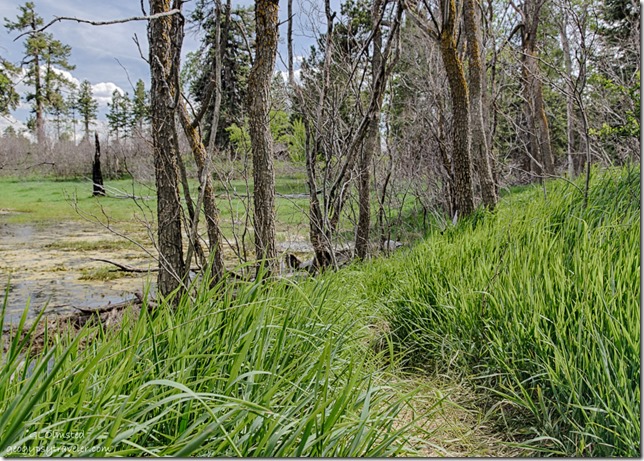
You took us to Greenland Lake in June last year, (wow was it only a year ago!) there was only a very little water, but I remember taking the photo of the Variegated fritillary butterfly there.
Interesting to see the changes. Great photos. Have a fun week Diane
I forgot about that. It has been a while since I saw water here.
Hi, Gaelyn! Enjoyed your write-up and photos of Greenland Lake. When Nancy and I were on the Rim, we would stop by fairly regularly to view and photograph in the area of the lake. Sometimes we would see deer slaking their thirst at the lake.
Thank you George. I forget about this little stop and was so happy to see water. Only saw the evidence of deer.
I’ve really enjoyed learning about all the ways water moves and disappears out here in the west. So many interesting things going on above and below the surface. Amazing the difference in the lake in your two photos. I’m sure the wildlife really appreciate the huge water bowl this year. Your photos are spectacular. The details really come through.
Thanks. Water really is an amazing property, especially in the desert.
Lovely to see even a small lake so full of water in June. Beautiful pics as always. Love the fallen snag.
Especially with the high temps this June. Seems I’m usually posting snow storms in early June on the North Rim. No complaints.
Cool. The lakes on our Turkey Mountain are small and almost dry up during no rain spells.
Is your area karst?
Gorgeous green — wonderful walk. I’m so glad there was ample snowpack. That’s great to see. I think the drought in Florida should be over based on how much it rained just before and just after we left our RV Park. It was so needed there.
This good snowpack by no means ended the SW drought of about 17 years but sure is nice to see some water around. At least for a little while.
Looks like a sweet little body of water though I would call it a pond myself. Really love seeing it empty and full. We don’t have many of those in the east. ELEVEN FEET of snow. Wow!!! An excellent result for the lake. Looks like a very nice day.
I was so happy to see water there as it’s been so dry for so long on the plateau, and all over the SW.